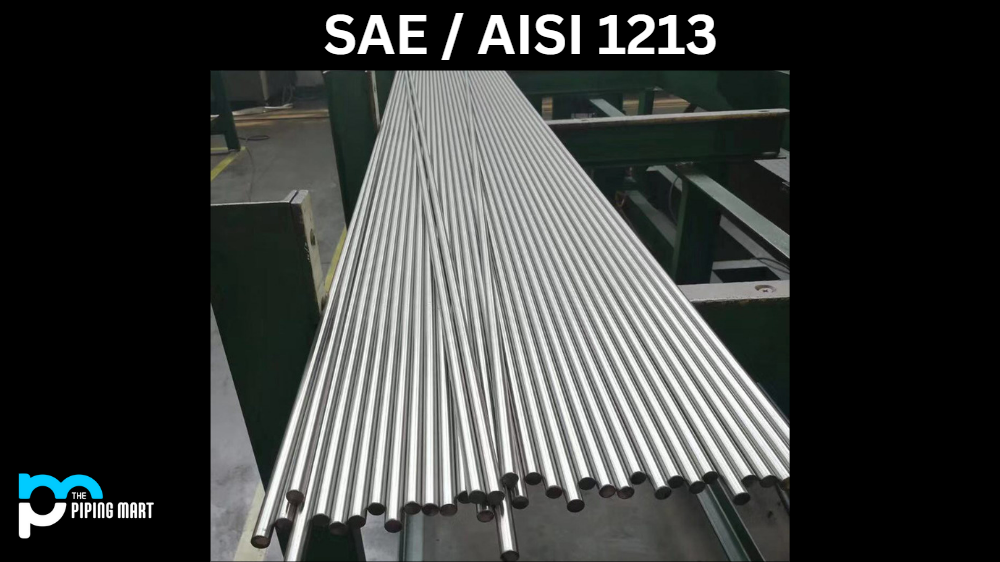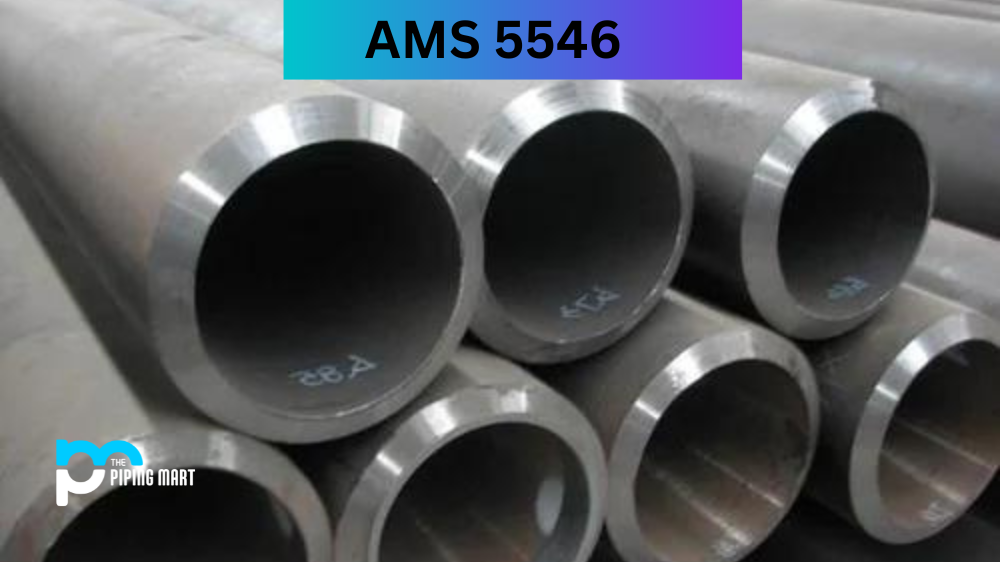SAE 1213 is designated for diverse carbon steel alloys, distinguished by their favourable machinability, weldability, and corrosion resistance. Notably, these alloys exhibit excellent heat resistance and heat treatment properties. Examining the uses, properties, and welding aspects of SAE/AISI 1213, also recognized as UNS G12130 reveals its widespread application and unique composition. This steel alloy is revered for its high machinability, good weldability, and exceptional surface finish, making it a preferred choice for crafting precision machine parts like gears and screws. Recognized for its cost-effectiveness, AISI 1213 is an ideal option for projects requiring high-volume production, with readily available equivalent grades for easy substitution. Ultimately, SAE-AISI 1213 steel proves versatile, cost-effective, and reliable, offering excellent performance across various applications.
What Forms of AISI 1213 is Available at Piping Mart?
- Nut
- Bar
- Bolt
- Pipe
- Screw
- Tubing
- Valves
- Washers
- Flanges
- Fasteners
- Electrodes
- Stud Bolts
- Sheet Plates
- Pipe Fittings
- Forged Fitting
- Instrumentation Fittings
AISI 1213 Composition
AISI 1213 steel, a designation encompassing various carbon steel alloys, is characterized by a distinct composition contributing to its exceptional properties. With a focus on high machinability, good weldability, and corrosion resistance, its unique blend of elements ensures optimal performance. This alloy, also known as UNS G12130, stands out for its cost-effectiveness, making it an ideal choice for projects demanding high-volume production.
| Element | Content (%) |
|---|---|
| Iron, Fe | 98.42 – 98.99 |
| Manganese, Mn | 0.70 – 1.0 |
| Sulfur, S | 0.240 – 0.330 |
| Carbon, C | 0.13 |
| Phosphorous, P | 0.070 – 0.12 |
AISI 1213 Physical Properties
AISI 1213 steel showcases distinct physical properties crucial for varied applications. Renowned for its high machinability, good weldability, and excellent surface finish, this alloy ensures precision in crafting machine parts. Its cost-effectiveness makes AISI 1213 a favoured choice for projects requiring efficient high-volume production with readily available equivalent grades.
| Properties | Metric | Imperial |
|---|---|---|
| Density | 7.87 g/cm3 | 0.284 lb/in³ |
AISI 1213 Mechanical Properties
AISI 1213 steel demonstrates notable mechanical properties, emphasizing high machinability, good weldability, and corrosion resistance. Its unique composition ensures efficient performance in crafting precision machine parts such as gears and screws. Renowned for cost-effectiveness, it is optimal for projects requiring extensive high-volume production with readily available equivalent grades for easy substitution.
| Properties | Metric | Imperial |
|---|---|---|
| Tensile strength | 540 MPa | 78300 psi |
| Yield strength | 415 MPa | 60200 psi |
| Bulk modulus (typical for steel) | 140 GPa | 20300 ksi |
| Shear modulus (typical for steel) | 80 GPa | 11600 ksi |
| Elastic modulus | 190-210 GPa | 27557-30458 ksi |
| Poisson’s ratio | 0.27-0.30 | 0.27-0.30 |
| Elongation at break | 10% | 10% |
| Reduction of area | 35% | 35% |
| Hardness, Brinell | 167 | 167 |
| Hardness, Knoop (converted from Brinell hardness) | 188 | 188 |
| Hardness, Rockwell B (converted from Brinell hardness) | 85 | 85 |
| Hardness, Vickers (converted from Brinell hardness) | 175 | 175 |
| Machinability (based on 100 machinability for AISI 1212 steel) | 140 | 140 |
AISI 1213 Thermal Properties
AISI 1213 steel showcases vital thermal properties crucial for its functionality. With its unique composition, this alloy displays impressive resistance to heat and excellent heat treatment capabilities. These thermal features enhance its effectiveness across various applications, establishing AISI 1213 as a dependable option for projects demanding resilience to high temperatures and precise heat treatment.
| Properties | Metric | Imperial |
|---|---|---|
| Thermal expansion co-efficient (@ 20°C/68°F, typical steel) | 11.5 µm/m°C | 6.39 µin/in°F |
| Thermal conductivity (typical steel) | 51.9 W/mK | 360 BTU in/hr.ft².°F |
AISI 1213 Equivalent
- ASTM A108
- ASTM A29
- ASTM A576
- SAE J403
- FED QQ-S-637 (1913)
AISI 1213 Uses
AISI 1213 is a versatile material that has a wide range of uses in various industries. This type of steel is often used in the manufacturing of parts and components for machinery where high accuracy and precision is required. Additionally, AISI 1213 can also be found in the production of nuts, bolts, and screws, as it has excellent machinability and can be easily formed into different shapes and sizes. In the automotive industry, AISI 1213 is commonly used in the production of engine parts due to its high strength and wear-resistance properties. Overall, AISI 1213 has a diverse range of applications and is trusted by engineers and manufacturers alike for its reliability and quality.
AISI 1213 Uses in Industries
- Manufacturing
- Construction
- Tool Making
- Electrical Equipment
- Agriculture
AISI 1213 Corrosion Resistance
SAE / AISI 1213 is chromium-containing stainless steel that offers excellent corrosion resistance. This makes it an ideal choice for applications in environments with harsh chemicals, such as in the food and beverage industry.
AISI 1213 Heat Resistance
SAE / AISI 1213 steel is an improved low-carbon alloy with good heat resistance properties. This type of steel has a lower carbon content than many other types of steel, which makes it more suitable for tasks where a large amount of heat may be present. SAE / AISI 1213 is also known for its superior wear and fatigue resistance, making it popular in industrial settings where strength and durability are paramount. Its hardenability rating also offers excellent machinability, allowing manufacturers to quickly shape it into components with intricate shapes or sizes and with incredible precision. With its array of advantageous properties, it’s no wonder that SAE / AISI 1213 heat resistance has proven to be such a popular option in numerous industries over the years.
AISI 1213 Machining
Due to its relatively soft nature, Machining SAE / AISI 1213 steel is an efficient and cost-effective process. As a result, it can be machined relatively quickly with standard milling machines and other tools with very few modifications required. The ductility and strength of the material also make it ideal for applications that require more detailed or complicated designs than traditional cut breaks. These characteristics allow it to withstand wear from repeated machining operations, ensuring a longer-lasting product. Despite its strength in some applications, the fact that this material can be somewhat brittle should be considered when designing components meant to be heavily mechanically stressed. With proper design and maintenance techniques in place, however, SAE / AISI 1213 steel remains an excellent option for machining projects of any scale.
AISI 1213 Welding
SAE/AISI 1213 welding is a relatively simple process, ideal for inexperienced welders. Before attempting the weld, the steel must be carefully prepped by removing any potential contaminants. Once prepared, 1213 welding can be accomplished with an oxy-acetylene torch or arc welder. A slag layer should be used as a medium between the molten weld and filler material during the welding process. This will protect against flaws caused by errors in material layering, thus enabling a sound finished product. An experienced welder should gain satisfactory results with this type of welding without difficulty – ensuring both safety and precision during production processes.
Conclusion
SAE / AISI 1213 is a versatile carbon steel alloy with many benefits. It is easily welded and machined with good corrosion and heat resistance. This makes it ideal for automotive parts, gears, machine tools, fasteners, and welding fixtures. With its many benefits, it’s no wonder that SAE / AISI 1213 is a pr choice for many locations.

A passionate metal industry expert and blogger. With over 5 years of experience in the field, Palak brings a wealth of knowledge and insight to her writing. Whether discussing the latest trends in the metal industry or sharing tips, she is dedicated to helping others succeed in the metal industry.




